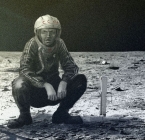InfiniteMonkey
Posts: 355
Joined: 9/16/2016
Status: offline

|
quote:
ORIGINAL: Alfred
What rubbish you write about what I posted and then as a free kick insults are thrown in. Typical of someone with the ego of a small planet who simply cannot accept his tests are fundamentally flawed.
I said you were mistaken. That is hardly throwing stones.. You, however wrote "not some vanity test which has not taken into account all the relevant variables". And I'm the one throwing insults? So you are pure hearted and always correct, but I'm posting as a "vanity test"? What did you expect in my response?
quote:
ORIGINAL: Alfred
1. You cannot properly control because you do not know nor properly understand the variables.
2. You have done no such thing as a valid "scientific test". To do so requires only a single variable input to be tested. Over many iterations. And the entire set of test conditions are fully published so that any one else can replicate exactly the same test. You have not done any of this so don't insult me or any other reader with your self perceived "superior" scientific test.
I invite anyone who doubts me to replicate the test. Create identical air groups in as close to identical conditions as the game allows using the scenarios editor, then vary ONLY the number of aircraft in the group and see what happens to pilots that train in those respective groups. I have attached a screenshot for anyone that wants to duplicate my results.
1. Go into the scenario editor and open Scen 1.
2. Make TEST-1 through TEST-10 as you see TEST-1 in the screenshot.
3. On TEST-2/4/6/8/10, make the 'Ready' number of planes 1 isntead of 15.
4. File->Save As Scenario to another scenario slot.
5. Once in game, start a new game as Japan Go to Oita and pull pilots from the reserve to each air group until you have 20 pilots in each air group.
6. Pull leaders for each air group from the bottom of the leader list ranked by Leadership skill. Try for a number in the 40ish range.
7. Run the turn.
8. Look at pilot list for each group.
9. Run as many turns as you like to get confidence that number of planes has an impact on skill advancement.
quote:
ORIGINAL: Alfred
3. Because your ego is so huge and the need to invalidate me is consuming you misrepresent my post. I presented the results of the game engine. Those results completely and utterly contradict your claims. Which I remind you is the claim that air units with fewer aircraft will train fewer pilots than fully TOE equipped air units.
I'm not interested in invalidating you. In a recent post, I recommended a newbie read your back posts. That is hardly representative of invalidating you. I did note (correctly as my experience here confirms and posts confirm) that you are a crotchety guy, but that your information is usually good. My tests support my assertion, but your sample of data does not. You have not controlled other variables. By your own admission, the cases you cite are just a sampling of the pilot experience gains in a handful of squadrons that happen to have 1 or 2 aircraft in them. I've told you I created duplicate squadrons - the only difference in them was the number of planes and the leaders, though the leaders were as close as leader selection would allow me to make them.
quote:
ORIGINAL: Alfred
4. Anyone with a scintilla of understanding knows that in a contest between game engine results and a mickey mouse test bed, the game engine results always trump what the mickey mouse test bed throws up.
I used the game engine to perform the test, therefore my test is a test of the game engine. Not sure how you think I got the results without using the game to test. I am measuring dx/dy where dx is the change in experience and dy is the change in number of planes. All other variables are held constant.
quote:
ORIGINAL: Alfred
5. A good tester, when confronted with what the diametrically opposed outcomes, would go back to his mickey mouse test bed and try to see where they failed.
You might apply this to your own "test". Say, put a full complement of planes in an air group with the same starting experience, the same air craft, the same base, ample support, the same morale, attempt to match up leader stats, and pull fresh pilots form your reserve. Then compare the two groups where one has 1 or 2 aircraft, and the other has 20 something. You did not do that. I did.
quote:
ORIGINAL: Alfred
The simple fact of life is that you are one of the numerous reverse engineers who frequent the forum who is incapable of accepting the truth when it is uttered by a dev or by someone with a better mind than yourself. This then makes you envious.
Lol. MIT trained software engineer bud, I make my living doing this kind of stuff. I am very good at it and I am very well paid to do it.
quote:
ORIGINAL: Alfred
Practical players play the game as it is. They are not in a position to play the game in a vacuum divorced from all the externalities that exist in every single situation. I showed what the game engine does. If there was any validity to your mickey mouse test bed which you employed to purportedly show what the game engine does, there would not be such a discrepancy in outcomes.
Odd statement when you have no control groups and have not kept any of the variables that I cited constant in your sample. To disprove my position, you would have to present air groups with similar variables and larger numbers of aircraft training that did not advance at a greater rate. You haven't. You have effectively proven nothing.
quote:
ORIGINAL: Alfred
There is no fact for me to further disprove because you have not produced a single fact about how this game engine operates. I show game reality, you show your make believe world.
I will repeat it again. Players do not need aircraft inside air units in order to generate pilot training. Air units with 1 or 2 aircraft in them can advance more pilots than air units with 100% TOE. Just as some air units with 100% TOE can also advance more pilots than other air units with a very low TOE%.
I've shown you results that contradict your statement here. Not sure I can say anything that will ever convince you.
quote:
ORIGINAL: Alfred
Show me a single dev comment that shows I am wrong and you are correct. You will not find one; not in the manual, not in the pilot addendum, not in the patch notes, not in any post in any thread in the forum. So on what basis can you sustain your superiority.
Observed results. You develop a theory, you design a test for that theory, you measure the results. You draw conclusions from the results. Frankly, if a dev came on here and said you were right, my first action would be to send him the above scenario file and say, "Okay, then why do I get these results?" Devs are not infallible any more than you or I are.
quote:
ORIGINAL: Alfred
Constantly my comments get challenged by "reverse engineers" but they always fail, although they never apologise. In one particular 2014 (IIRC) thread after several pages of vehement antagonism against me Symon, in one of his last posts pointed out that I was completely correct. The very next post in that thread came from Symon who wryly noted how quickly silence descended when a dev spoke.
Just like the Greek Gods have left Mt Olympus, so have the devs left AE. I am as close as AE players can get to the knowledge of the devs precisely because I closely research what they have posted, and have often provided their source comments for independent verification. You provide ... give me a moment I'll think of something ... really there must be something you do ...
Alfred
I said you were wrong. I based it upon tests of the game engine using air groups that attempted to eliminate as many variables as might be involved in the test. The results were not just sorta clear, they were clear by an order of magnitude. Not once in your rant have you even considered that you, the devs, or anyone else might be wrong. If it walks like a duck, if it quacks like a duck, it's probably a duck. If I vary ONE thing, and that thing is the number of planes, and I get 7-9 times as many skill advancements, then I feel pretty comfortable thinking that the number of planes has a significant impact on the rate of training advancement.
 Attachment (1) Attachment (1)
|
 Printable Version
Printable Version























 New Messages
New Messages No New Messages
No New Messages Hot Topic w/ New Messages
Hot Topic w/ New Messages Hot Topic w/o New Messages
Hot Topic w/o New Messages Locked w/ New Messages
Locked w/ New Messages Locked w/o New Messages
Locked w/o New Messages Post New Thread
Post New Thread